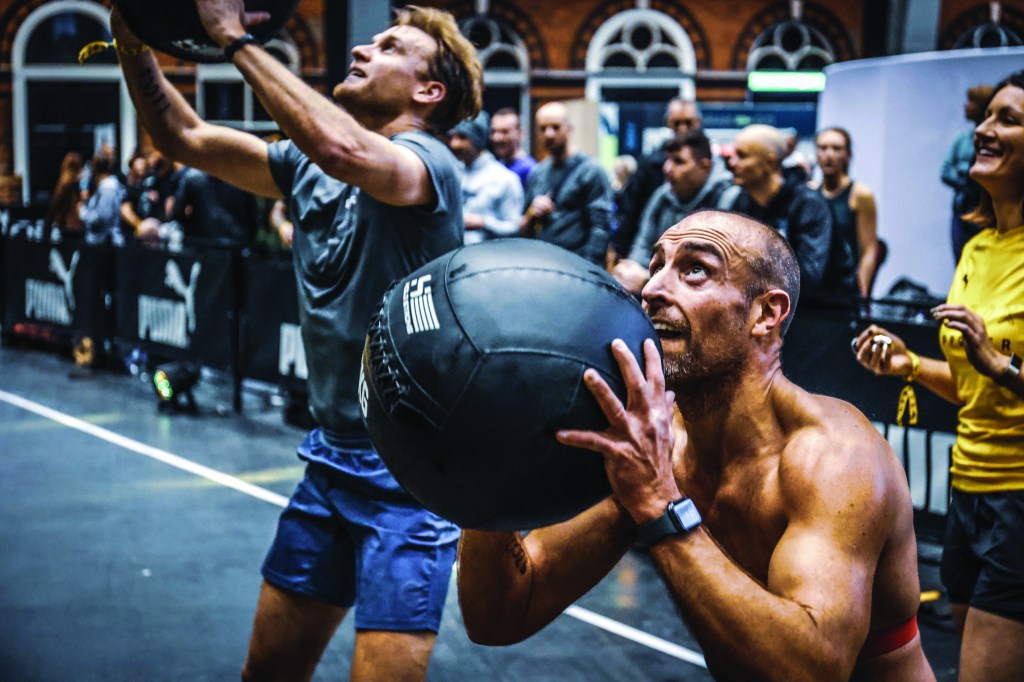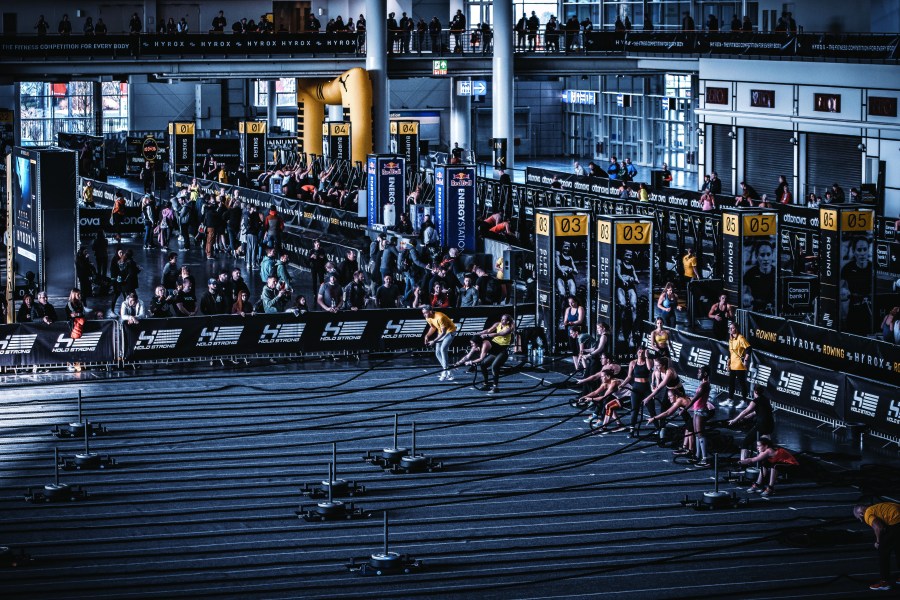Want to improve your Hyrox performance? Avoid these eight Hyrox training mistakes and shave minutes off your time
Whether you’re gearing up for your first Hyrox competition or you’re a Hyrox veteran, it’s likely that you’re keen to get the best time possible.
After all, securing a spot at a Hyrox event, particularly in locations such as London, can require more blood, sweat and tears than the workout itself, so you may as well give it your all.
The good news? Shaving minutes off your time isn’t just about working harder, it’s about avoiding the classic mistakes that slow most people down.
Because even the most committed gym-goers can end up making some classic mishaps that may end up costing serious time on the Hyrox course.
These Hyrox PTs reveal the biggest Hyrox training mistakes pre-race and during the race that could be costing you energy and most importantly time
You keep practising the whole event in your training
Although it might be tempting to go over the whole event again and again in your training, it can burn you out. If it’s your first time doing Hyrox, Hyrox Coach Paul Ratcliffe suggests doing just one full Hyrox simulation eight to 10 weeks before the event.
“You can get a rough idea of how it feels, determine bottlenecks, where you push too hard and where you could pull back a bit but after this, stick to race specific workouts instead,” recommends Paul.
“I’d do the first three stations and 1km runs as a block, rest and do this two or three times. Try to be consistent with your pacing. On one day you might do runs, ski ergs and the sleds and another you might do runs, burpees, row and farmer’s carry. Do two or three rounds to get a feel for it.”
Your wall balls aren’t deep enough
You’ll be hearing the words ‘no rep’ if your knees don’t go below 90 degrees on your wall ball squat. No reps waste your energy and do your finish time zero favours.
Nailing your wall balls requires some trial and error in your training. “Work on different foot widths and look how far you need to turn your toes out. Open them further to drop a little lower into the squat,” says Paul.
“Hold the ball at head height, resting it on your chin. Your hands should be in a 4pm and 7pm position. Use the bounce from the bottom of your squat to explode back up, extending your arms to release the ball and then starting your squat just before you catch the ball. Each wall ball should be one fluid movement.”
Paul suggests sitting in a goblet squat position with a heavy dumbbell to help add extra inches to your depth. Practicing front squats also helps to avoid you tipping forward.
“Do a few wall ball sessions with a heavier ball to make the race day ball feel lighter but also practice with a normal weight to ensure you can improve the speed of reps.”
Look to do pre-fatigued wall balls too, perhaps as a finisher. This will mimic how you’ll feel on race day as wall balls are the final station.

You’re neglecting your transition times
The Roxzone – the area between the running track and the functional workout stations – can add an extra 700 to 1000 metres to your running distance, over the course of the entire race.
Although this extra distance isn’t part of the official 8 km running segments, it does contribute to the total distance covered during the event. So it makes sense to work as efficiently as possible.
“Walking the Roxzone is always going to cost you time. Make sure you have the fitness to run to each station instead,” says George Edwards, PT at London’s Gymbox Farringdon.
“The quickest guys pretty much use the Roxzone to accelerate.”
When training, George recommends a 200m above-race intensity run followed by 30% of a station (such as 300m on the ski erg), followed by another 200m run. Do this multiple times, across various stations.
“You’re getting used to hitting a station at above heart rate intensity and then you’re back into it as well. A lot of gyms now have treadmills that are self-started, so you can hop on and hop off quickly.”
You’re neglecting your legs during the sled pull
It’s not just your arms driving the sled up the track on your sled pulls.
“For most people, the best technique is hip drive- getting down low and extending your hips up as though you’re doing a deadlift.
Keep your arms extended out in front as you come up to standing, lean back and walk the sled back, maximising the use of the 1.8m box and walking back from the front to the back.
Paul warns: “Most gym tracks are nothing like the Hyrox track, so remember, it’s much harder on the day.” With this in mind, you might want to add more weight to your sled during training sessions.
You’re pushing the sled with your arms straight
Much like the sled pull, the sled push requires whole body power. “Your forearms should be on the sled poles with your hands pressed against them, bending at the elbows so the upper arms are through the poles with your shoulders over the top of the plates.
“Your centre of mass should be over the centre of the sled and you should be in a nice angled position,” says Paul.Take short, sharp steps with your legs behind you.
“Don’t try and maximise the range of motion in your legs, as you’ll lose the power from your legs.”

You’re spending too much time in the weights room
Being strong will undoubtedly help, but you won’t get the Hyrox time you’re dreaming of, if your running speed isn’t up to scratch.
George suggests doing mostly tempo runs, which require you to work at a comfortably hard pace, typically for 20 to 40 minutes.
These help to build a solid aerobic foundation, which Pauls says is key for Hyrox.
“This prolongs the amount of time you can train without dipping into your glycogen stores (stored carbohydrates) and instead, your body relies more on fat and oxygen for fuel, delaying any feelings of fatigue.”
George recommends a weekly 90-minute endurance session too, such as a slow run.
As well as the runs, George recommends weekly intensity sessions (such as the ones above) equating to about 90 minutes in total -the average Hyrox time.
“Depending on your schedule, this could be two 45-minute sessions or three 30-minute sessions. And then you add your strength on top.”
You aren’t resting enough between training sessions
Overtraining in Hyrox is very common, but you’ll burn out and be more prone to injury.
Paul recommends taking a day’s rest after Hyrox-specific, high intensity sessions and then making your next session a lighter workout, with less intensity.
“It’s better to do hard days, leave space between and make them quality sessions that you can recover from,” says Paul.
If you’re 16 to 20 weeks out from a race, Paul suggests incorporating just a sprinkling of Hyrox-style workouts so you can focus on building strength for moves such as sleds and lunges while also building up your aerobic capacity with steady state cardio workouts.
“You might do one Hyrox specific workout a week to practice technique, then as you get closer to the event, eight to 10 weeks out, you can increase this number.”
Checking your Heart Rate Variability (HRV) over a period of time can help you check in on your recovery. “If it’s consistently low over a four to five day period, consider your recovery times. Listen to your body as well and know when to pull back.”
You’re relying on data
It’s easy to become reliant on smart watches to guide your pacing but in the Hyrox arena, watches are irrelevant as the GPS is unreliable so you may end up going slower than you want.
“It’s vital you get a good feel for what your desired running pace feels like without a watch or tracker. Lock in your mind how the runs should feel,” says Paul.








